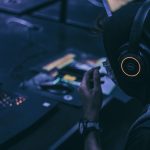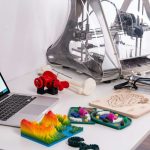As virtual reality (VR) technology continues to evolve, the lines between fantasy and reality blur. One of the most exciting prospects is employing your everyday smartphone as a virtual reality controller. This option is economical, convenient, and opens a world of immersive possibilities. If you’re new to this or looking to enhance your experience, understanding the advanced settings for using your smartphone as a VR controller can be a game-changer. Let’s delve into these settings and how they can optimize your VR experience.
Understanding the Basics
Before diving into advanced settings, it’s crucial to grasp the basic concept of using a smartphone as a virtual reality controller. Typically, this involves pairing your smartphone with a VR headset. The smartphone acts as an input device, translating your physical movements into virtual actions. This makes navigating, gaming, and interacting in virtual environments more intuitive and engaging.
Have you seen this : Can Smartphones Be Used to Monitor Solar Panel Efficiency in Homes?
However, many users are unaware that their smartphones come equipped with a range of advanced settings that can significantly enhance their VR experience. From improving motion tracking to tweaking display settings, these advanced options can transform your virtual reality journey.
Optimizing Motion Tracking
Motion tracking is a cornerstone of any VR experience. When using your smartphone as a VR controller, precise motion tracking ensures that your virtual movements accurately reflect your real-world actions. Several settings can help you fine-tune this aspect.
Topic to read : How to Utilize Your Smartphone for High-Precision Cooking?
Gyroscope Calibration
Your smartphone’s gyroscope is pivotal for motion tracking. Over time, the gyroscope can drift, leading to less accurate tracking. Periodically recalibrating your gyroscope can correct this drift. Navigate to your settings, find the “Sensors” section, and look for the gyroscope calibration option. Follow the on-screen instructions to ensure your smartphone’s motion tracking remains accurate.
Enhance Sensor Sensitivity
Most smartphones allow you to adjust the sensitivity of various sensors, including the accelerometer and magnetometer. Higher sensitivity can result in more precise motion tracking, but it may also lead to increased battery consumption. Balancing sensitivity and battery life is essential. Look for these options in the advanced settings of your phone’s motion and tracking section.
Use External Sensors
For those seeking the pinnacle of motion tracking accuracy, consider using external sensors. Some VR platforms support connecting external sensors to your smartphone via Bluetooth or Wi-Fi. These sensors augment your smartphone’s built-in capabilities, providing an even more immersive and accurate VR experience.
Adjusting Display Settings
A smooth, visually appealing display is crucial for an enjoyable VR experience. Several advanced settings can help you get the most out of your smartphone’s display when using it as a VR controller.
Refresh Rate
The refresh rate of your smartphone’s display affects the fluidity of your VR experience. A higher refresh rate results in smoother visuals, reducing motion sickness and increasing immersion. Many smartphones allow you to adjust the refresh rate in the display settings. Opt for the highest refresh rate your device supports, typically 90Hz or 120Hz, for the best experience.
Resolution and Frame Rate
Resolution and frame rate go hand-in-hand in delivering a high-quality VR experience. While a higher resolution provides crisper visuals, a higher frame rate ensures smooth motion. Some advanced settings allow you to balance these two elements. For instance, you might lower the resolution slightly to achieve a higher frame rate, or vice versa, depending on your preference and the capabilities of your device.
Night Mode and Blue Light Filters
Extended VR sessions can strain your eyes. Activating night mode or blue light filters can alleviate this discomfort. These settings reduce the amount of blue light emitted by your screen, which can cause eye strain and disrupt sleep patterns. Look for these options in your display settings and adjust them according to your comfort level.
Enhancing Connectivity
A seamless VR experience depends on robust and reliable connectivity between your smartphone and the VR headset. Several advanced settings can help you optimize this crucial aspect.
Bluetooth Optimization
Most smartphones use Bluetooth to connect to VR headsets. Ensuring your Bluetooth settings are optimized can reduce latency and improve overall performance. In your smartphone’s settings, navigate to the Bluetooth section and ensure that it’s set to the highest performance mode. Additionally, make sure there are no interfering devices nearby that could cause signal disruption.
Wi-Fi Settings
In some cases, VR setups utilize Wi-Fi for connectivity, particularly for streaming high-quality content. Ensuring a stable and fast Wi-Fi connection is vital. Use advanced settings to prioritize your VR device on your network, minimize interference from other devices, and select the fastest available Wi-Fi band, typically 5GHz, for the best performance.
USB Connectivity
For wired connections, using USB debugging mode can enhance performance by allowing your smartphone to communicate more effectively with the VR headset. Enable USB debugging in the developer options of your smartphone’s settings. This setting is particularly useful for reducing latency and improving data transfer rates during VR sessions.
Customizing User Interface and Controls
Personalizing your VR experience through user interface (UI) and control settings can make interactions more intuitive and enjoyable.
Button Mapping
Many VR applications allow you to customize button mappings on your smartphone. This means you can assign specific actions to certain buttons or gestures, making your VR experience more tailored to your preferences. Explore the control settings within your VR app and adjust the button mappings to suit your needs.
Voice Commands
Voice commands offer a hands-free way to interact with your VR environment. Many smartphones come equipped with voice recognition technology that can be integrated into your VR setup. In your smartphone’s settings, enable voice commands and customize the vocabulary and actions to fit your VR use cases.
Haptic Feedback
Haptic feedback, or the tactile response you feel from your smartphone, can significantly enhance immersion. Advanced settings allow you to adjust the intensity and type of haptic feedback you receive during VR sessions. Navigate to the haptic feedback settings in your phone and experiment with different settings to find the most immersive experience.
Unlocking the full potential of your smartphone as a virtual reality controller involves diving into a variety of advanced settings. From optimizing motion tracking and adjusting display settings to enhancing connectivity and customizing your user interface, each aspect plays a vital role in delivering a seamless and immersive VR experience.
Understanding and utilizing these advanced settings not only improves performance but also enhances your overall enjoyment and interaction within the virtual world. As VR technology continues to evolve, staying informed about these settings will ensure you remain at the cutting edge of virtual reality experiences.
In conclusion, mastering the advanced settings on your smartphone can transform it into a powerful VR controller, opening up new realms of possibility and allowing you to fully immerse yourselves in the fascinating world of virtual reality.











